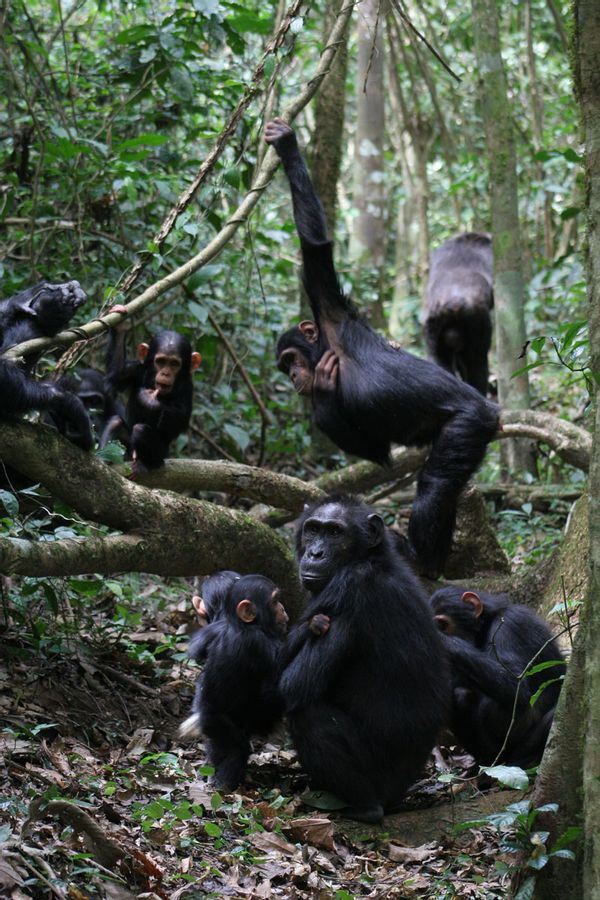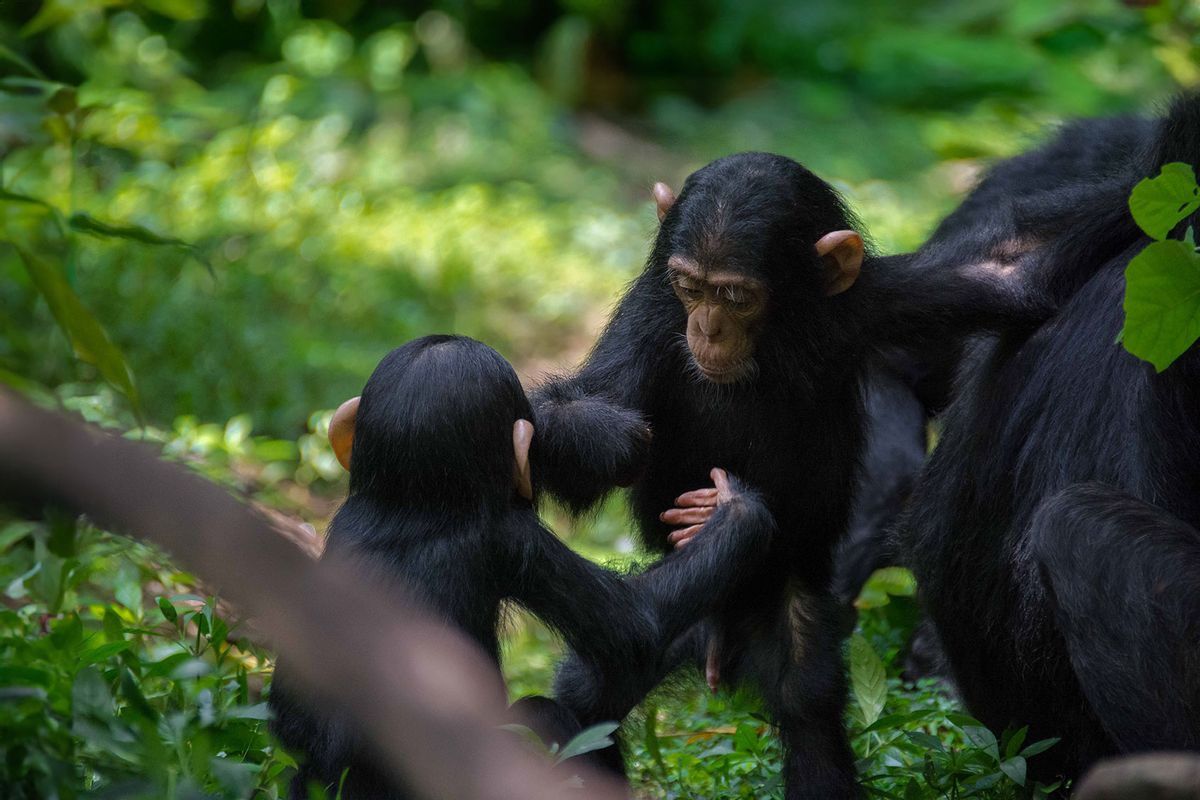When people talk to each other, their conversations usually include many fast twists. Humans do not naturally talk in Shakespearean soliloquies, but by regularly interrupting and wildly gesticulating. The conventional wisdom is that our chats will take major turns roughly every 200 milliseconds — and new research in the journal Current Biology reveals that chimpanzees do the same thing.
"They would go back and forth with ‘groom me,’ ‘no you groom me,’ ‘no me’ for ages before one would finally give in and make the first move."
"Chimpanzees also engage in rapid signal-to-signal turn-taking during face-to-face gestural exchanges" to roughly the same extent as humans, the authors write. "This correspondence between human and chimpanzee face-to-face communication points to shared underlying rules in communication." The authors speculate that this could be due to chimpanzees and humans sharing the same ancestors or because they coincidentally developed similar strategies for coordinating interactions and managing competition to communicate.
The scientists learned this by gathering data on chimpanzee “conversations” across five wild communities in East Africa, ultimately including more than 8,500 gestures for 252 individuals. The scientists specifically focused on the turn-taking and conversational patterns of their chimpanzee subjects. Ultimately they learned that 14% of communicative interactions included multiple exchanges — from as few as two individuals to as many as seven — of gesticulation and interruption.
Study co-author Dr. Catherine Hobaiter, who works at the University of St. Andrews' School of Psychology and Neuroscience, observed this directly during her research.
"I remember watching two big males in a sort of grooming stand-off, where they’ll both end up grooming each other but the goal is not to be the first to groom, as that loses you a little social prestige," Hobaiter said. "They would go back and forth with ‘groom me,’ ‘no you groom me,’ ‘no me’ for ages before one would finally give in and make the first move." Chimpanzees behave similarly when courting each other, as "It can take sustained effort at times for a male to persuade a female he is worthy of her time."
 Group of chimpanzees including mothers, juveniles, subadults, and infants grooming and playing at the Budongo Conservation Field Station in Uganda. (Photo by Catherine Hobaiter)
Group of chimpanzees including mothers, juveniles, subadults, and infants grooming and playing at the Budongo Conservation Field Station in Uganda. (Photo by Catherine Hobaiter)
Scientists who study chimpanzee communication suspected that these exchanges occurred frequently, but it has been difficult to acquire reliable data documenting it. Like humans, chimpanzees who spend most of their days around the same group of individuals do not need a lot of back and forth in their communication. As a result, "It has taken us decades to have a large enough dataset to really start to investigate this aspect of their communication," Hobalter said.
By contrast, primatologists had plenty of information about physical manifestations of chimpanzee intelligence. For decades, scholars have chronicled chimpanzees as they use tools or play with toys. It is easier to observe those signs of intelligence than something more subtle, like the nuances of communication.
"Our exploration of chimpanzee culture has often been focused on their tool use, but human culture includes so much of our social behavior, our language, songs, dances, fashions . . . we’re starting to see more and more evidence that other ape species might share that capacity for individual and cultural expression in their communication too," Hobaiter said.
Want more health and science stories in your inbox? Subscribe to Salon's weekly newsletter Lab Notes.
"We’re starting to see more and more evidence that other ape species might share that capacity for individual and cultural expression."
For scientists to translate and comprehend these chimpanzee cultures, however, they must first understand how they communicate with each other. Fortunately, just as humans follow certain consistent rules when talking with each other, chimpanzees that talk to one another engage in the same basic behaviors.
"We knew chimpanzees exchanged gestures, and we knew that — in humans — conversations across different languages both share a common tight timing, just 200 milliseconds between turns, and show small but consistent cultural differences," Hobaiter said. "Japanese speakers take fast turns. Danes take slower ones."
Until this recent study, however, scientists did not know for sure if chimpanzees would share these timing structures in their own conversations. The chimpanzees did exactly that, right down to showing the slight cultural variations that add spice and enrichment to human cultures.
"We had no idea that we’d also see these small but consistent group differences," Hobaiter said. "In our case it’s the Sonso chimpanzees in north-western Uganda that are the slow turn-takers."
In addition to helping humans learn more about chimpanzees, the study may also help us learn more about ourselves.
"As well as being a great example of another parallel between humans and other apes, it’s also a good reminder that we sometimes need to look beyond superficially similar behavior to see those shared characteristics," Hobaiter said. "For example, we often compare spoken language with other species’ vocalizations. But we can express language in many forms, and there’s no reason to assume that other species have a vocal-bias in their communication. In chimpanzees the fast-paced turn-taking so characteristic of language is found in their gestures."
She speculated that we might be missing similar communication nuances in other animals: "Could we see turn-taking in color signaling in octopuses?!"



Shares